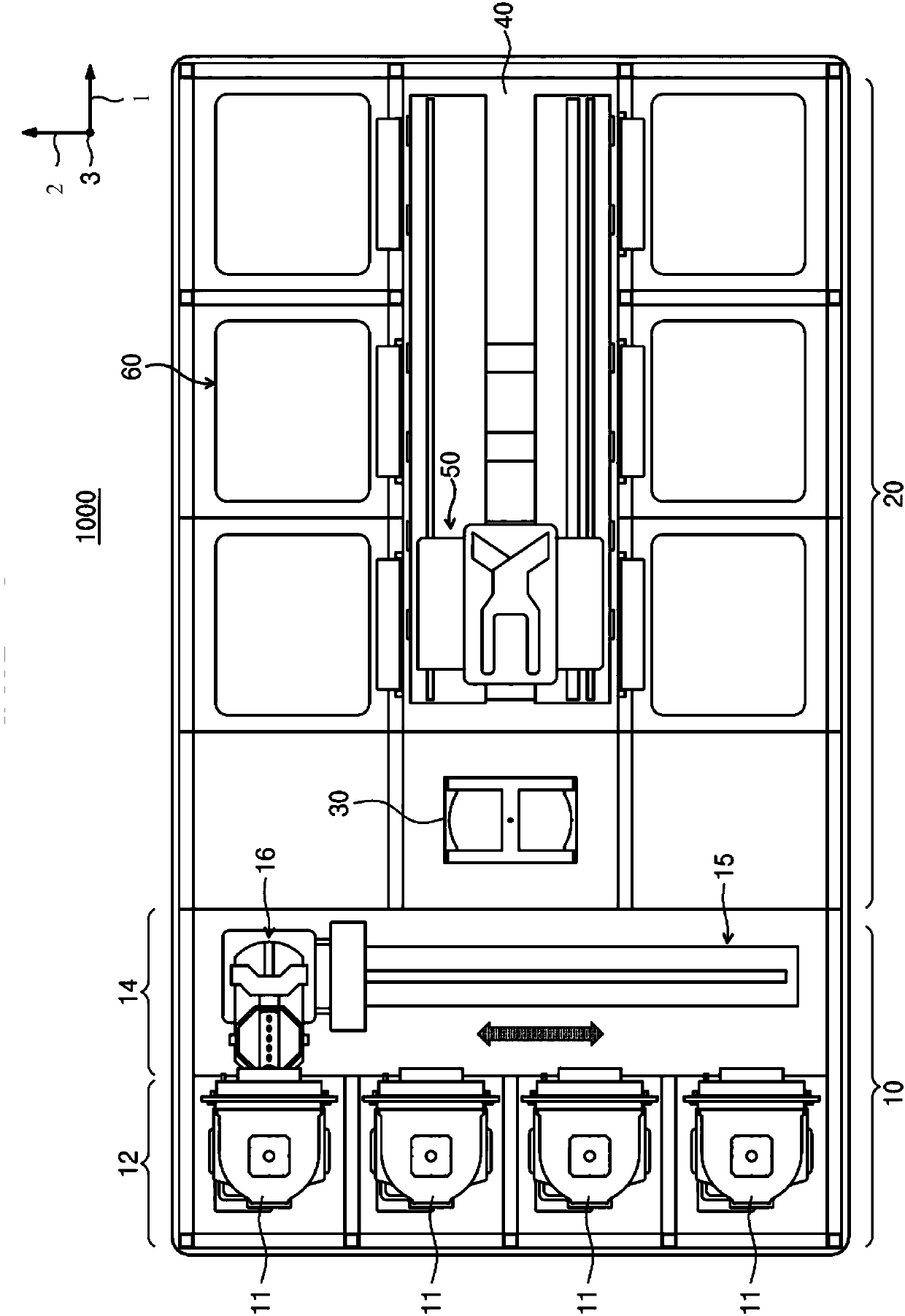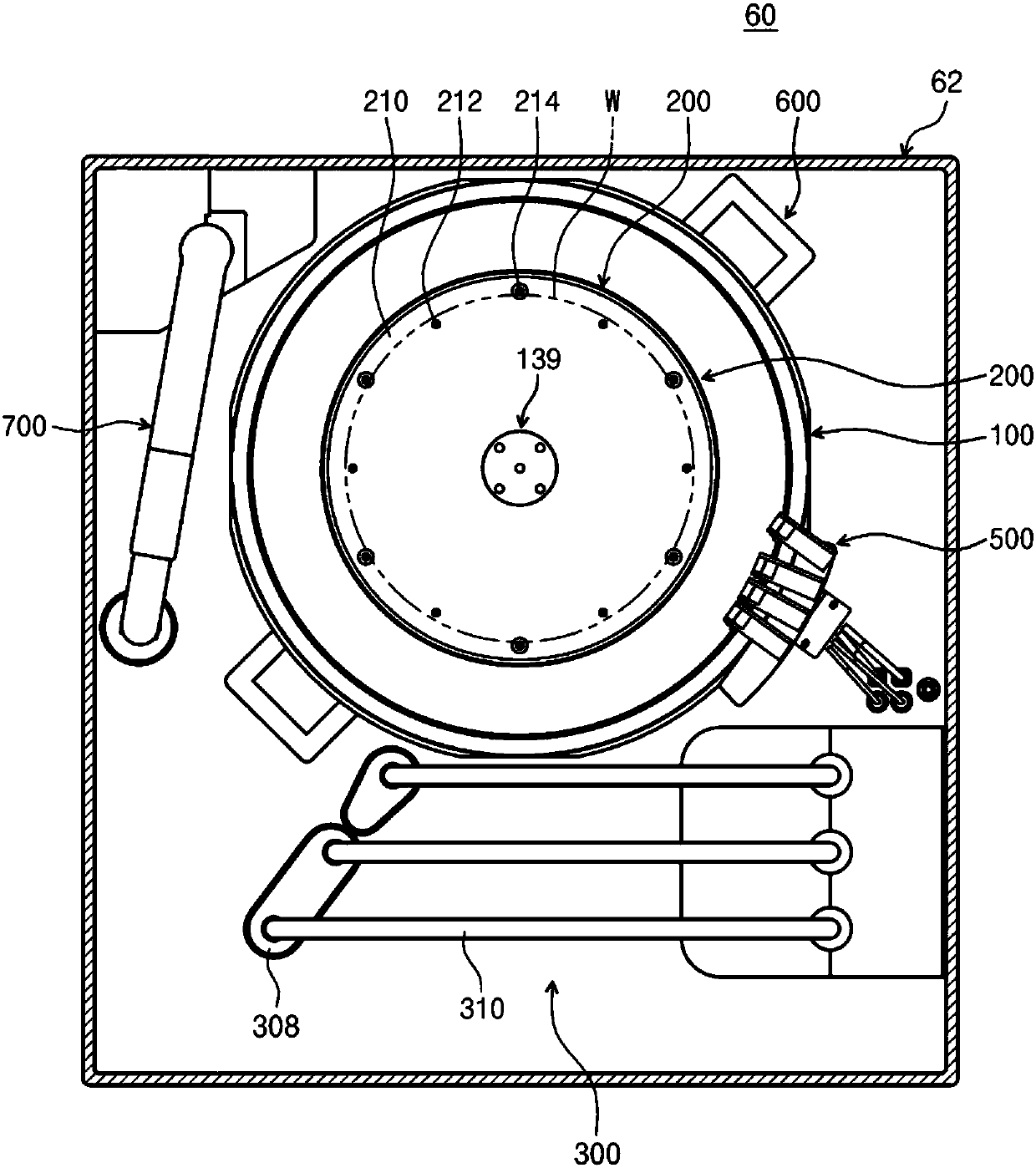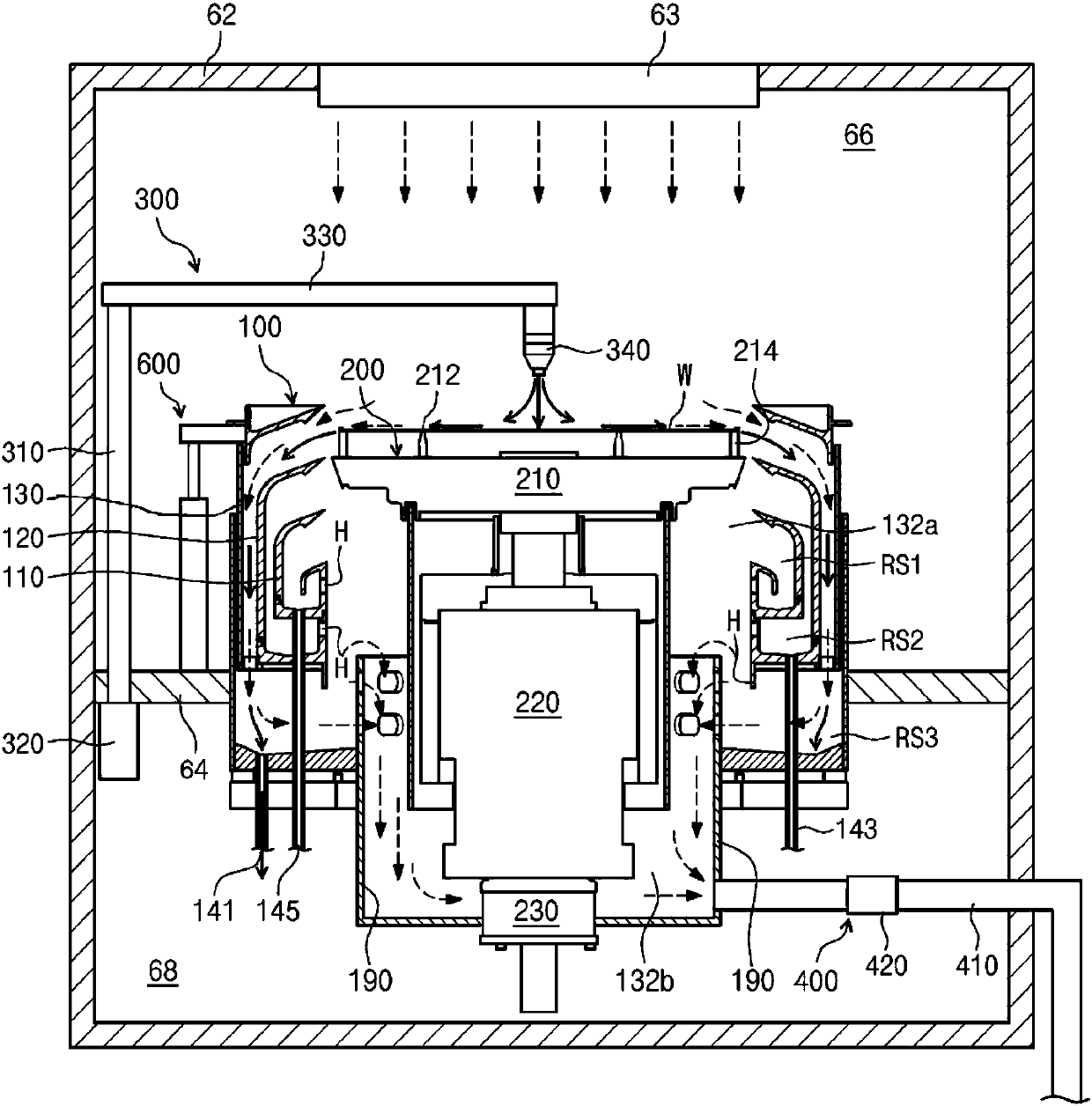Substrate treating system
A technology for a substrate processing system and a substrate processing device, which is applied to conveyor objects, static electricity, electrical components, etc., and can solve problems such as the inability to remove static electricity from substrates
- Summary
- Abstract
- Description
- Claims
- Application Information
AI Technical Summary
Problems solved by technology
Method used
Image
Examples
Embodiment Construction
[0022] The present invention is susceptible to various modifications and forms, and specific embodiments of the present invention will be shown in the drawings and described in detail. However, the present invention is not limited to specific disclosed forms, but it should be understood that the scope of the present invention includes all changes related to the spirit and technical scope of the present invention and their equivalents or substitutes. Detailed descriptions of known technologies related to the present invention will be omitted so as not to obscure the technical essence of the present invention.
[0023] The terminology used herein is for the purpose of describing particular embodiments only and is not intended to be limiting of the invention. Terms in a singular form may include plural forms unless otherwise specified. The terms "comprising" and "having" are used to indicate the presence of features, quantities, steps, operations, elements, parts or their combin...
PUM
| Property | Measurement | Unit |
|---|---|---|
| Surface resistance | aaaaa | aaaaa |
| Surface resistance | aaaaa | aaaaa |
| Surface resistance | aaaaa | aaaaa |
Abstract
Description
Claims
Application Information
 Login to View More
Login to View More - Generate Ideas
- Intellectual Property
- Life Sciences
- Materials
- Tech Scout
- Unparalleled Data Quality
- Higher Quality Content
- 60% Fewer Hallucinations
Browse by: Latest US Patents, China's latest patents, Technical Efficacy Thesaurus, Application Domain, Technology Topic, Popular Technical Reports.
© 2025 PatSnap. All rights reserved.Legal|Privacy policy|Modern Slavery Act Transparency Statement|Sitemap|About US| Contact US: help@patsnap.com



